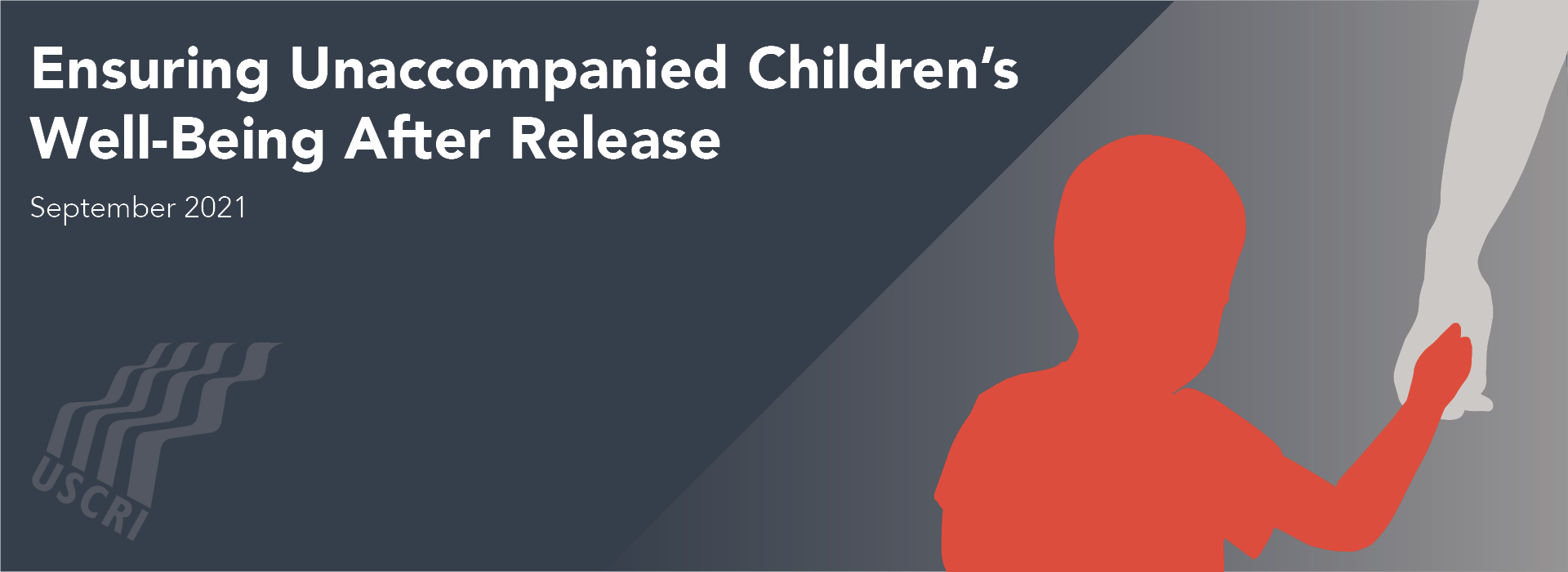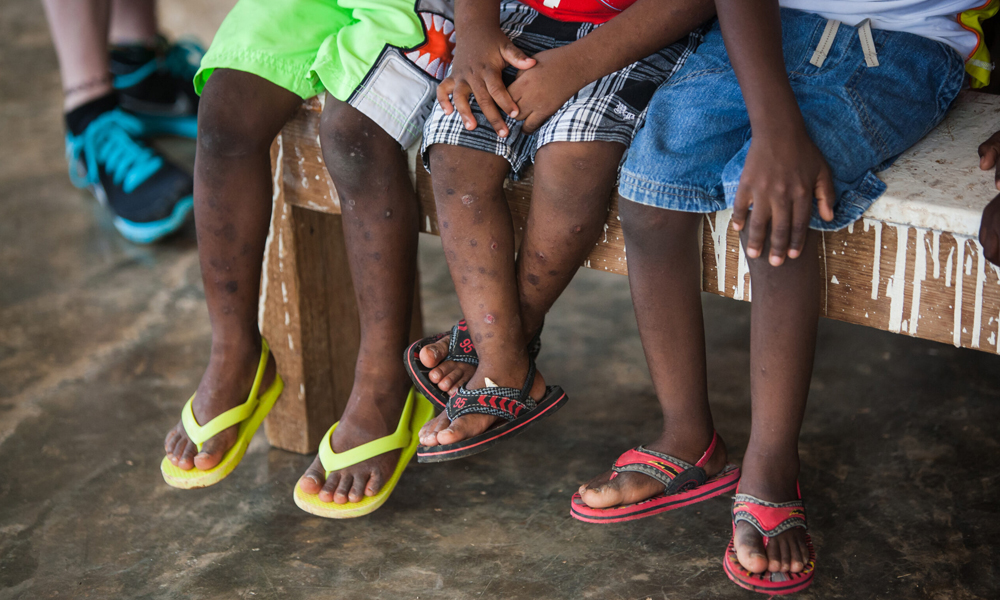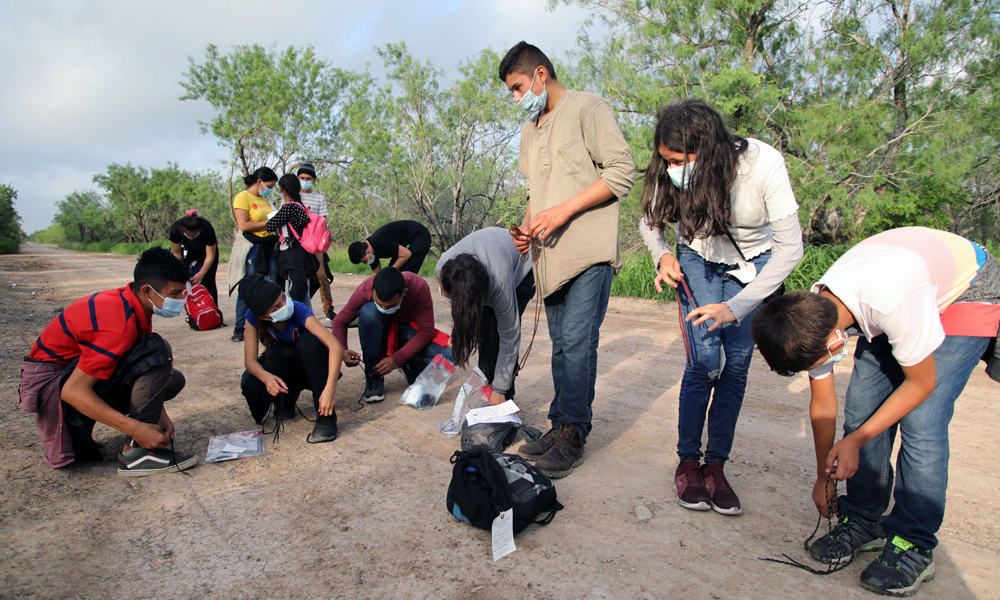
RECOMMENDATIONS: Ensuring Unaccompanied Children’s Well-Being After Release
ORR should:
1. Reinforce Post-Release Services by Extending Eligibility, Expanding Services Offered, and Aligning PRS Delivery with Best Practices in Child Welfare
- Make all UCs eligible for PRS
- Enhance the post-release services offered to the most vulnerable UCs
- Align PRS eligibility timeframes with best practices in child welfare by allowing more flexibility for longer or shorter PRS
- Ensure that any youth who contacts the ORR National Hotline within 180 days of release is routed to a PRS provider
- Align PRS to best-practice models that include comprehensive and culturally relevant approaches
- Make all UCs eligible for PRS
2. Strengthen continuity of care by allowing shelter and TFC providers to provide continued case-management supports for 30 days post-discharge where justified by the child’s needs
3.Create a Regional Strategy for UC Placement and PRS Service Delivery
- Consider sponsor location in initial placement of UCs at providers
- Consider UCs’ release locations in grant awards for new providers and new provider facilities
- Make all UCs eligible for PRS
The following organizations have endorsed the summary recommendations above:
- Alba Care Services
- Association of Children’s Residential and Community Services
- Bethany
- Board of Child Care
- Catholic Community Services
- Cayuga Centers
- Children’s Village Boystown
- Crittenton Cunningham Children’s Home
- First Focus on Children
- Heartland Alliance
- Latino Family Institute Inc.
- Lincoln Hall
- Lutheran Immigration and Refugee Services
- Lutheran Social Services of New York
- Morrison Child and Family Services
- National Youth Advocate Program
- Nuevo Amanecer Latino Children Services
- Rising Ground, Inc.
- Seneca Family of Agencies
- Southwest Key Sueño
- Sunny Glen Children’s Home
- The Baptiste Group LLC
- Upbring
- U.S. Committee for Refugees and Immigrants
- U.S. Conference of Catholic Bishops, Migration and Refugee Services
- YouthCare

Ensuring Unaccompanied Children’s Well-Being After Release
September 2021
Authoring organizations: Bethany, Board of Child Care, Heartland Alliance, Lutheran Immigration and Refugee Service, U.S. Committee for Refugees and Immigrants, U.S. Conference of Catholic Bishops, Migration and Refugee Services, YouthCare.
Overview
ORR-funded post-release services (PRS) solidify the relationship between child and caseworker and provide critical assistance to sponsor families as they adjust to their caregiving role. Additionally, PRS serve a preventive function by reducing many factors known to contribute to future mental-health difficulties, physical-health complications, maladaptive behaviors and functioning, child maltreatment, and placement disruptions. Exceptional case-management support to a child and their sponsor after unification offers important assistance for timely school enrollment, participation in the legal process, and positive community integration through connections with health, mental health, and social service providers. In light of increased arrivals of children and releases of unaccompanied children to their sponsors, we recommend a robust strengthening of PRS delivery by expanding services offered to a greater number of unaccompanied children, supporting case managers, and systematically and efficiently placing UCs in the PRS delivery network. Where our recommendations are likely to require legislative and budgetary support from Congress, the authors of this report also advocate that Congress provide ORR with that support.
Background on Supports to UCs and Sponsors
UCs who enter ORR shelter programs will be reunited with a parent or other verified family member in the vast majority of cases.1 In shelters, case managers work diligently to assess potential sponsors, prioritizing a safe and timely release while also balancing children’s individual and at times complex needs. The sponsor assessment process requires that case managers develop an in-depth understanding of potential sponsors, including information about their personal histories, relationships, and daily home lives.
For approximately 20% of the most vulnerable UCs in ORR care,2 PRS specialists provide additional assistance in locating, accessing, or connecting to community resources. These resources may include education, health care, mental health services, and identifying legal representation. Post-release services are one part of a safety net for youth that includes home studies, sponsor verification, and background checks, assessments, in-custody therapeutic services, and ORR wellness checks (well-being calls). Post-release services also follow the child in the event that the child changes addresses.
Historically, ORR has offered post-release services to UCs that receive a home study; children who are victims of trafficking in persons; children with special needs; children who have suffered physical or sexual abuse by a caretaker; and children who may require a higher level of support. Current ORR policy extends PRS delivery for 180 days for the most vulnerable UCs, per the Trafficking Victims Protection Reauthorization Act of 2008. ORR also uses its discretion to offer PRS delivery in some additional cases. UCs who receive discretionary post-release services are limited to 90 days.
It is common for youth in the UC provider network to have weakened interpersonal connections. A core principle of both trauma-informed care and trauma-responsive care is that youth benefit from positive interactions with adults. The roles of case managers (in shelters) and PRS specialists (after release) present opportunities for youth and sponsors to form strong therapeutic alliances based on trust and stability. From experience as practitioners, we have observed that essentially all UCs who enter care have suffered some level of traumatic exposure, whether it be family separation, environmental and/or interpersonal violence, neglect, or abuse. For the most vulnerable youth, expanded support is critical. Estimates vary widely as to the number of UCs with diagnosable trauma disorders.3 Given the heightened rates and risk of trauma before, during, and after migration,4 the provision of post-release support is important to children’s immediate needs as well as their long-term developmental outcomes.
Recommendations
1. Reinforce Post-Release Services by Extending Eligibility, Expanding Services Offered, and Aligning PRS Delivery with Best Practices in Child Welfare
Post-release services support both therapeutic assistance to UCs and community-integration assistance for UCs and sponsors. Research is clear that “quality services for unaccompanied youth are compounding, not additive,” meaning that the benefits multiply affect outcomes for youth.5 In short, when children have access to post-release services, they also have better outcomes. Better PRS delivery equates to better child welfare and improved lives.
Current post-release services are too limited in scope and fail to meet the therapeutic needs of UCs. Simply by the nature of their circumstances as unaccompanied children, the youth entering into ORR care can be considered vulnerable. Most UCs in ORR custody have suffered from one or several traumas severe enough to benefit from therapeutic support. Sponsors commonly benefit from both the services received and the contact alone, which creates secondary benefits for the UC. For the most vulnerable UCs, service provision should be improved by alignment with proven models that can be adapted to offer culturally knowledgeable interventions. For all UCs, ORR should increase flexibility in PRS eligibility and access to case support so that individual needs determine the length and intensity of support.
a. Extend eligibility of post-release services to all UCs
Post-release support can provide therapeutic benefits to children and can assist UCs and sponsors in overcoming the numerous barriers to community integration. Certain experiences are common to all UCs as they integrate in new settings, including extended periods without social structure, lack of access to consistent schooling, grief for lost social networks left in communities of origin, long periods of isolation, and communication difficulties in a second or third language.6 Consequently, PRS access can help meet the multitude of challenges endured by UCs.
ORR should extend PRS delivery to all children for the first 90 days after release, and ensure that the PRS provider network is robust enough that all families receive contact from their assigned PRS case manager within 14 days. ORR should also ensure that PRS case managers provide primary support, rather than child advocates or legal service providers, who in the past have had to take on social-welfare duties. Minimum PRS assistance should (i) ensure school enrollment; (ii) connect UCs with legal assistance if they do not already have representation; (iii) broach mental-health challenges within a culturally appropriate and non-stigmatizing frame; (iv) link UCs and sponsors to community resources for health care, mental-health care, and safety-net assistance; and (v) provide support to caregivers, including for normal adolescent developmental changes and for the emotional challenges of parenting.7
b. Enhance the services offered to the most vulnerable UCs via the PRS network
Access to high quality, culturally competent services provides youth and sponsors with a feeling of safety, security, confidence and comfort. Yet both practitioner literature and academic research have noted insufficiencies in service delivery.8 For the most vulnerable children, as defined by the care provider,9 ORR should offer enhanced services that exceed the current PRS standards. Since many UCs come from marginalized communities, they will not receive many social and health services that they require, absent directed programs. To assure that these children and sponsors receive appropriate support, ORR should channel them into a PRS model that is proven and evidence-based, including but not limited to High Fidelity Wraparound Services10 and Kinship Navigator Services11, and that can be adapted to offer culturally knowledgeable interventions. The services offered should exceed current PRS standards in both intensity of assistance and in the variety of services offered.
Further, ORR should analyze data from its Enhanced PRS pilot program to identify (i) services that have a high added-value when delivered through the PRS network, (ii) services to which UCs and sponsors lack access outside PRS delivery, and (iii) UCs who for whom the benefits of PRS expansion are clearest. ORR should contemplate whether expanded PRS delivery can increase efficiencies and decrease length-of-stay measures, as some case-management services can be delivered over a wider period and with a better continuity of support. Finally, in the use of expanded post-release services, ORR should iteratively incorporate findings to produce a framework by which all providers have the training and knowledge on how to connect local community stakeholders with the youth and sponsor across regular and expanded PRS provision.
c. Align PRS eligibility timeframes with best practices in child welfare
Current ORR policy dictates rigid PRS timeframes for all but a handful of cases. Children do not show therapeutic improvement on a calendar, and not all PRS cases fit into concrete timeframes. ORR should allow and fund providers to provide services for as long or as short as is necessary, and at the appropriate intensity. As part of this process, ORR should identify categories of children for whom longer periods of PRS delivery are appropriate, as well as allowing for individual cases outside the categories that it has identified. Lengthening PRS eligibility provisions better aligns ORR policy with the Family First Prevention Services Act and the domestic child-welfare system. Family First requires that youth placed in certain congregate-care settings in the domestic child-welfare system receive six months (180 days) of support after discharge.12 Nonetheless, as noted above, children may need longer or shorter periods of PRS based on their individual needs.
d. Ensure that any youth who contacts the ORR National Hotline within 180 days of release is routed to a PRS provider
All UCs and sponsors discharged from ORR care are provided with the ORR National Hotline number to contact as a means of support post-release. Given the numerous potential barriers to successful community integration that exist, and that some children will be put in placements where problems only emerge over time, the National Hotline serves as a natural mechanism by which UCs and sponsors can be referred to available PRS providers in their home community to alleviate whatever stressors and challenges they may be experiencing.
e. Align post-release services with best-practice models that offer comprehensive and culturally relevant approaches
Post-discharge support should emphasize building the youth’s and the sponsor’s abilities to identify, access, and connect to services that promote feelings of safety and connection for the youth. In the domestic child-welfare system, Family First requires that prevention services align with best practices in child welfare to be considered a promising, supported or well supported treatment model. PRS models should approximate or modify the evidence-based models used domestically, while ensuring that core aspects of cultural competency are reflected in policy and that acculturation problems are anticipated and addressed for youth.13 Models noted above—High Fidelity Wraparound Services and Kinship Navigator Services—offer one starting point.

2. Strengthen continuity of care by allowing shelter and TFC providers to provide continued case-management supports
Currently, ORR does not leverage the relationship between the case manager and the sponsor to achieve the best outcomes for youth and caregivers. During the sponsor-assessment process, case managers can develop deep connections with both youth and sponsors, and in which case managers initiate engagement in the transition process with youths’ families. The current process breaks off relationships at the time of release of the youth—perhaps the most critical time in ensuring that UCs are safely released and integrated into the sponsor’s home and community.
ORR should allow a 30-day window for care providers to support youth and sponsors as they get settled into their new living environment. Loosening the post-discharge contact restrictions for ORR providers would allow for the development of a supportive and reparative transition to the sponsor’s home and new community. Family First requires six months of post-discharge support for domestic foster care youth exiting congregate settings. However, providers can determine on an individual basis what that plan might look like based on individual assessments. UCs can benefit from an opportunity for continued connection to a supportive, positive adult, and would offer the sponsor reassurance that additional support is available in the sponsor’s efforts to care for this youth.
3. Create a Regional Strategy for UC Placement and PRS Service Delivery
Nearly all UCs have contact information for a potential sponsor at time of referral to ORR custody. Currently, the prospective sponsor’s location is not taken into consideration when placing the UC into a shelter or TFC program. ORR also has established regions for designation on how FFS and CFS personnel are assigned to program coverage.
By using this same regional approach to developing and engaging the provider network, ORR will be able to establish and leverage positive relationships with state and local authorities; providers will have the capacity to offer a larger continuum of care across their local networks; local networks; and there will be increased opportunity for better connection to state child-welfare systems, which will enable.
a. ORR should consider sponsor location in initial placement of UCs
Sponsor location can be inferred reliably, although not perfectly, from contact information like the area code of a phone number or by location information on a Facebook page. Placement closer to approved sponsors minimizes logistical challenges and aligns with the ORR Policy Guide preference for in-person releases when practicable.14 By enhancing the ability of the ORR Intakes Team to better coordinate placement of a UC with a provider located in the same region as their potential sponsor, there will be an increased opportunity to provide in-person, community-based supportive services and thus promote a safer and more comprehensive release and family unification process.
b. ORR should consider release location in grant awards for new providers and new provider facilities
As ORR considers adding new providers across the national network, there is an opportunity to leverage current release data in the development of this regional strategy. By using data to identify common release zones, ORR has an opportunity to prioritize providers located within 50 – 150 miles of a child’s potential sponsor. Having UC care provider facilities located in proximity to identified sponsors removes barriers to family unification by giving sponsors access to providers and services that have expertise in the area where they will be residing with the UC. This regional proximity increases access for in person services, potentially improving timeliness and speed of family unification, and has the added benefit of preparing youth for release to a community that is familiar to them.

















































